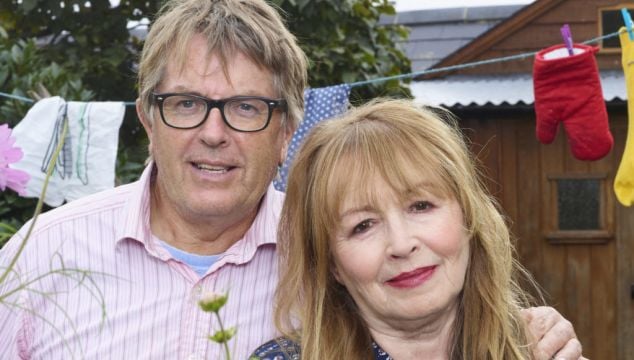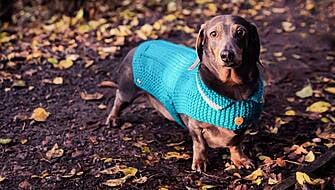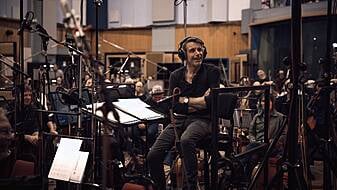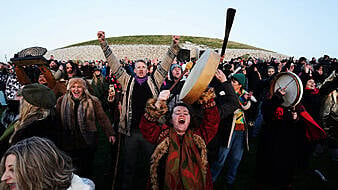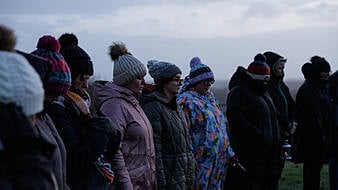Gogglebox star Mary Killen rings me 15 minutes before our interview, a little flustered. She’s in her local Waitrose car park waiting for her husband and TV partner Giles Wood, who has gone AWOL and hasn’t taken his mobile.
Half an hour later, they are back at their country cottage near Marlborough, Wiltshire, bickering mildly, chatting about topics ranging from Gogglebox to life in the sticks, the subject of their latest book, Country Life.
The former townies have lived in rural Wiltshire for more than 30 years and became the posh darlings of Channel 4’s Gogglebox in 2015. For the show she sits in an armchair upholstered in a leafy William Morris print – with matching wallpaper – and calmly absorbs her tousled, bespectacled husband’s observations, while he remains blithely oblivious to her frequent irritation.
View this post on InstagramAdvertisement
The book – written in their own individual voices in alternating chunks – follows in the same humorous vein, charting their move and the changes to the countryside, the ‘relocated Sloanes’, the ‘poncified’ shopping, the ghostly goings-on, farming shenanigans and village social life.
Warming to the country theme, Giles observes: “One of the big advantages of being in the country is being close to nature. And I’ve just seen a male blackbird mounting a female blackbird, yes, actual sex happening in front of us.”
“Oh Nutty [their pet name for each other], don’t give the wrong impression,” Mary interjects, exasperated. “But avian sex,” he persists, before she has the last word. “Don’t talk about sex like that! They’re mating!”
They are both joyously eccentric, but sharp too. Mary’s a journalist, formerly worked for Tatler and is currently The Spectator’s agony aunt; Giles contributes to The Oldie although he is a serious fine artist who, she says, needs to work more.
“Giles would have done more paintings if he had needed to create a beauty spot rather than just stand in one admiring it,” she writes.
He’s an avid reader of the Daily Mail – “Haven’t missed a single issue since I could read” – and she’s a hoarder, keeping what he calls “toppling piles” of magazines in which her articles have appeared in a local studio. She says things improved after she read Marie Kondo.
The couple, who have two daughters, met at Wimbledon College of Art where he was studying fine art and she was a costume model.
By their own admissions, they are technically incompatible. Mary is the social butterfly, going down to London to see her pals, while Giles spends an inordinate amount of time in the garden, which has become a standing joke, because nobody knows what he does there.
“I’d love to do a series going round my own garden. It could be called ‘What the ‘F’ does Giles do all day?’” he suggests.
But the partnership makes sense in many ways, with Mary adding: “We are not completely incompatible. We share a sense of humour and a taste in friends.”
In their own inimitable way, they describe how they went from country life – she grew up in Larne in Northern Ireland, he was raised in rural Staffordshire – to the city and back again.
Today, he reflects that Mary’s social ambition was the driving factor that brought them to Wiltshire in 1988.
He says the best thing about living in the countryside is space.
“A lot of my friends who live in Balham spend most of their lives in traffic jams moving at the pace of a horse and cart. And when they look back at their lives, they must be very frustrated to think, ‘Oh, I’ve spent a third of it asleep and a third of it in a traffic jam’.”
Mary is more the social butterfly, visiting her pals in London frequently, but doesn’t drive, which means that she relies on Giles and her friends to ferry her around.
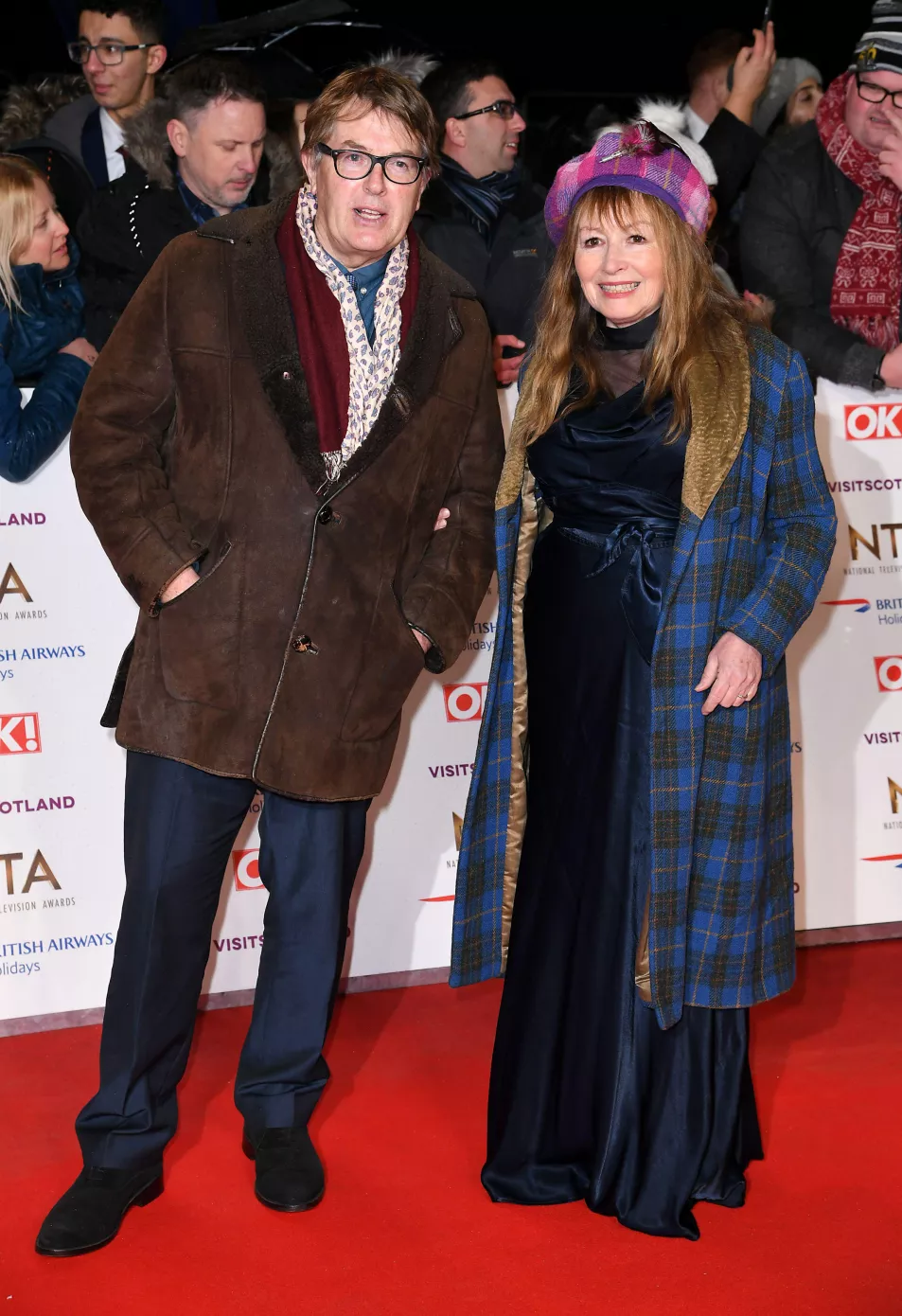
“Sometimes you feel quite trapped, especially if I don’t feel like driving you somewhere,” Giles tells her.
As a doctor’s daughter, Mary recalls the comings and goings of people when she was growing up.
“I was brought up in a house where the surgery was in the house, and I was used to two lots of 12 people a day, whereas Giles was brought up in a very remote house with nobody dropping in, so we have very different social needs,” she explains.
“I love chatting and that’s why I used to love the days when I worked in an office. I could go to The Spectator office and sit there, but frankly there isn’t room.
“I love colleagues and getting away from my own things. But it was better for the children to grow up in the country and it was much nicer for Giles because he’s got a one acre so-called garden which he is doing [as a] habitat for overwintering invertebrates in rather than flowers.”
In the book, there are references to the huge amount of time Giles spends in the garden. He says he’s trying to create a nature reserve, but confesses he spends a lot of time “fiddling about”.
However, they do come together while filming Gogglebox. “We are sitting intensively for 12 hours a week together,” she explains. The conversation progresses in comical tones, as they consider whether Gogglebox has brought them closer.
“It’s helpful in some ways for me when I’m being driven mad by him, as I was earlier today when I couldn’t get hold of him,” Mary explains frankly. “There were no taxis available because they’re all doing school runs.”
Gogglebox has undoubtedly raised their profile, she says.
“When I go out, I get these beaming people coming up to me saying, ‘Are you Mary from Gogglebox? We love your husband! He makes us laugh’. And I think, ‘Oh, good, he’s cheering people up’.”
“It’s become more of a duty now to keep the nation amused. It’s like a public service broadcast,” he adds. “It’s probably the only time we talk to each other, on Gogglebox, isn’t it Mary, apart from making admin arrangements?”
View this post on Instagram
Mary loves the Gogglebox crew that comes to their home to film, although she says it’s like being on a long-haul flight twice a week.
“There is disruption and Giles pretends that he’s too busy to do it, but when they pack up to go he always looks disappointed.”
As for the future, Giles would like to move to the wilds of Shropshire; Mary wants to return to London.
“I’m getting itchy feet. I’d like to move now. I’ve been here 30 years and I don’t like thatched roofs because all the rain comes on to my head,” he laments. “I’d like to live in a detached house with gutters.”
Mary has a different viewpoint. “This cottage and village are lovely technically, but I still think that for a very old person, which I will be soon, it’s better to be in the city because then you can walk to a hospital appointment, to art galleries and be in the swing of things.”
“There are some big conversations coming,” Giles admits.
The book sums up his interpretation of the countryside now, where “everything’s piped in”, he says.
“You’ve got your Disney Channel, your Apple, your social media, you can have all your food delivered. And there’s no local pub anymore. So the opportunities to socialise with other villagers, everything that made village life special, isn’t necessarily there anymore.”
He also dreams of moving to the sea.
“But you haven’t started working yet,” Mary says flatly.

Country Life: A Story Of Peaks And Troughs by Giles Wood and Mary Killen is published by Ebury Spotlight. Available now
